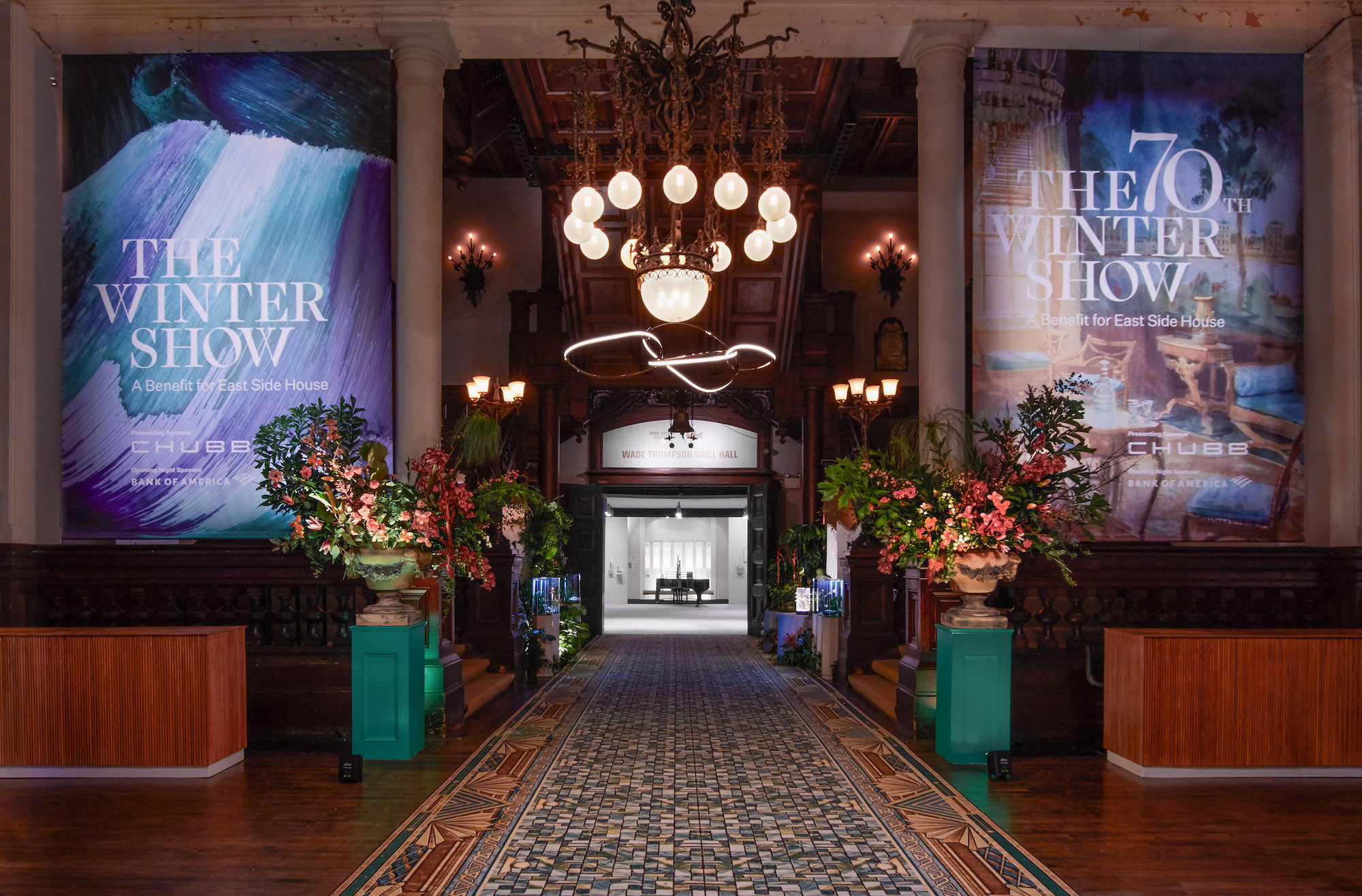From 17th-century gag items and rare mid-century wares to exceptional examples of contemporary craft, the 70th edition of the celebrated New York antiques fair has plenty to offer keen-eyed collectors.
Opening last Thursday with a ticketed gala for Bronx community resource platform East Side House Settlement and on view through 28 January 2024, The Winter Show has brought together an eclectic array of exhibitors purveying everything from rare books and maps to studio furniture and jewellery. Event regulars like Martha Stewart, Nicky Hilton, and former New York mayor Michael Bloomberg mingled with other discerning collectors, decked out in their finest attire, sampling caviar, sipping champagne, and most importantly, perusing 70 or so carefully staged vignettes. A jazz band and vine-covered gazebo—erected indoors—help set the mood.
As with many collectible art, ephemera, and design showcases held at the venerated gothic revival-style Park Avenue Armory, the boldest displays are found upfront. Here, visitors find galleries specialising in shimmering Louis XIV-era fine silver, especially dramatic Biedermeier cabinets, well-preserved Japanese armour, paintings by lesser-known English realists, and ever-popular Tiffany lamps. But that’s just the tip of the iceberg. Unexpected gems—a robust mix of period pieces and contemporary works—can be found throughout this cabinet of curiosities, steeped in eye-opening historical narrative.
Ranging from conceptual representations of passing time to colour-blocked carpets by influential 20th-century sculptors, Effect highlights its top 10 finds at this year’s show.
Colourful Frank Lloyd Wright china from his Tokyo Imperial Hotel (Bernard Goldberg Fine Arts)
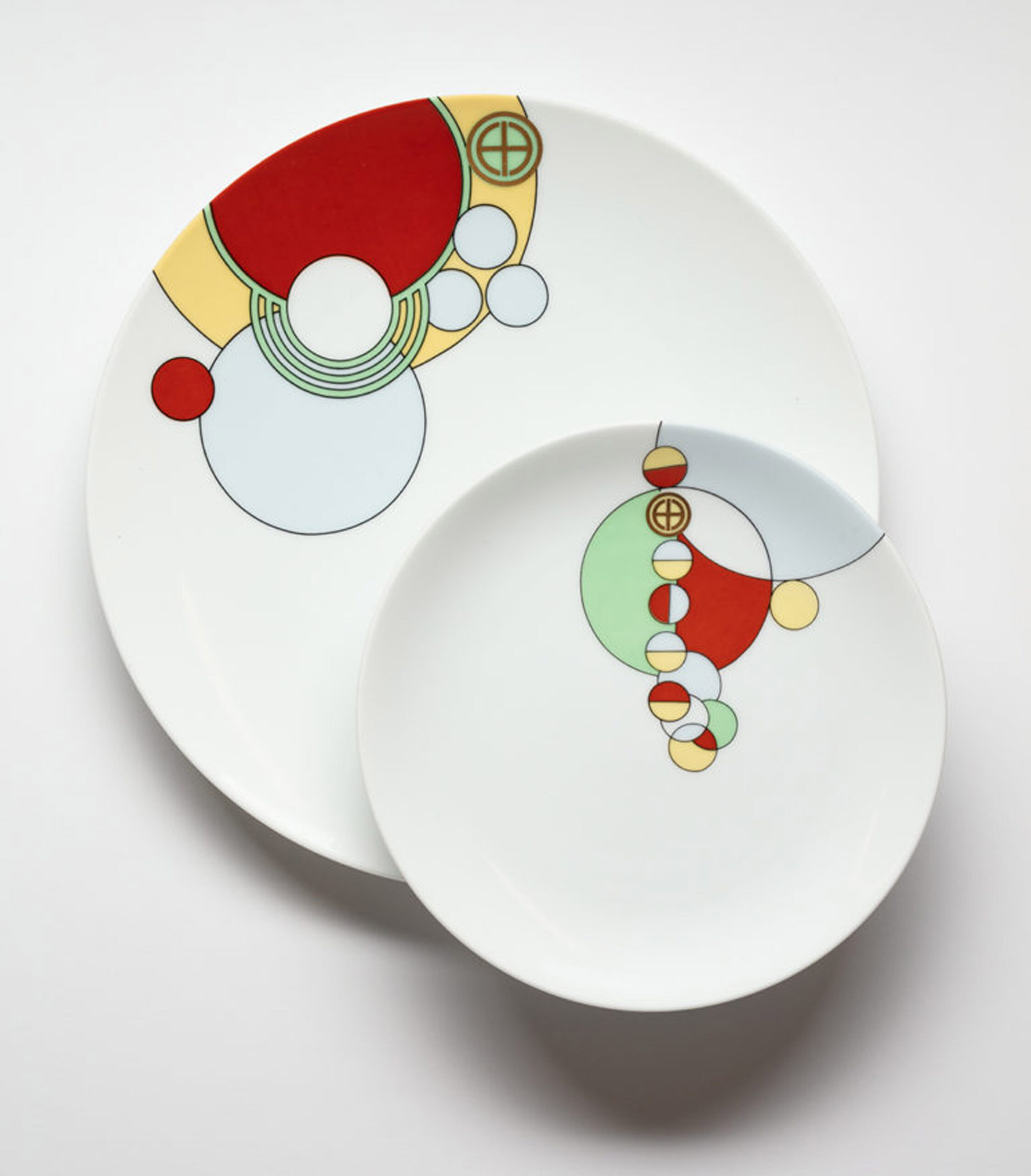
Designed as part of Frank Lloyd Wright’s seminal “total work of art” revamp of the Imperial Hotel in Tokyo (1916-1923), the Cabaret china set is reflective of the famed American architect’s career-long exploration of geometry; the precise distillation of natural forms. Playing with proportion and contrast, the especially colourful collection incorporates a scheme of weighted lines, intersecting circles, and tones matching his conception of the locale. The comprehensive architectural project was reflective of the proto-modernist’s love of Japan but culturally transcendent in its sparingly bespoke ornamentation. Presented by Bernard Goldberg Fine Arts, the meticulously glazed porcelain set, reproduced by Nagoya-based manufacturer Noritake in 1968, includes plates, bowls, teacups, and saucers.
A paper triptych burned to mark the passage of time (Michael Goedhuis)
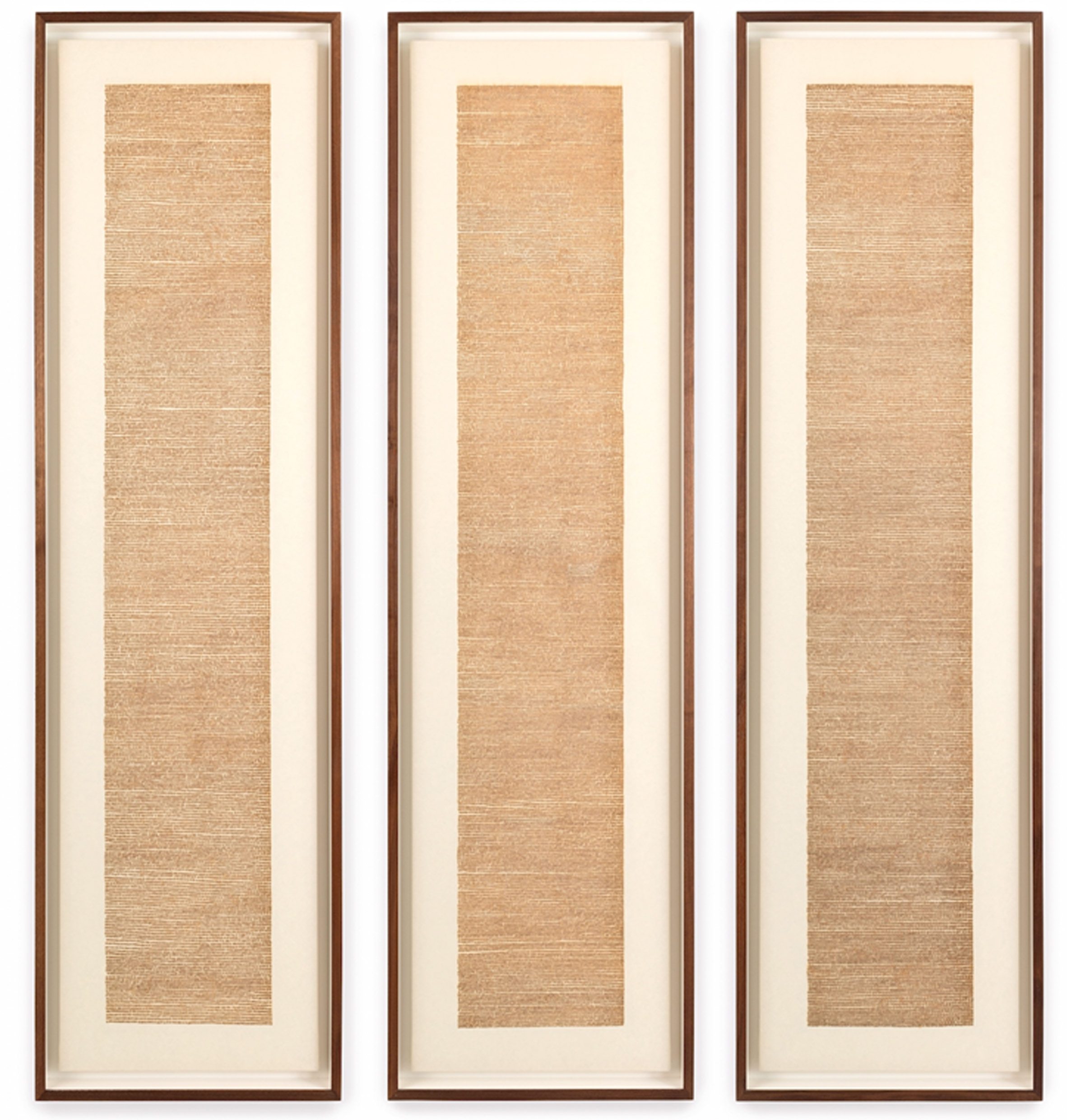
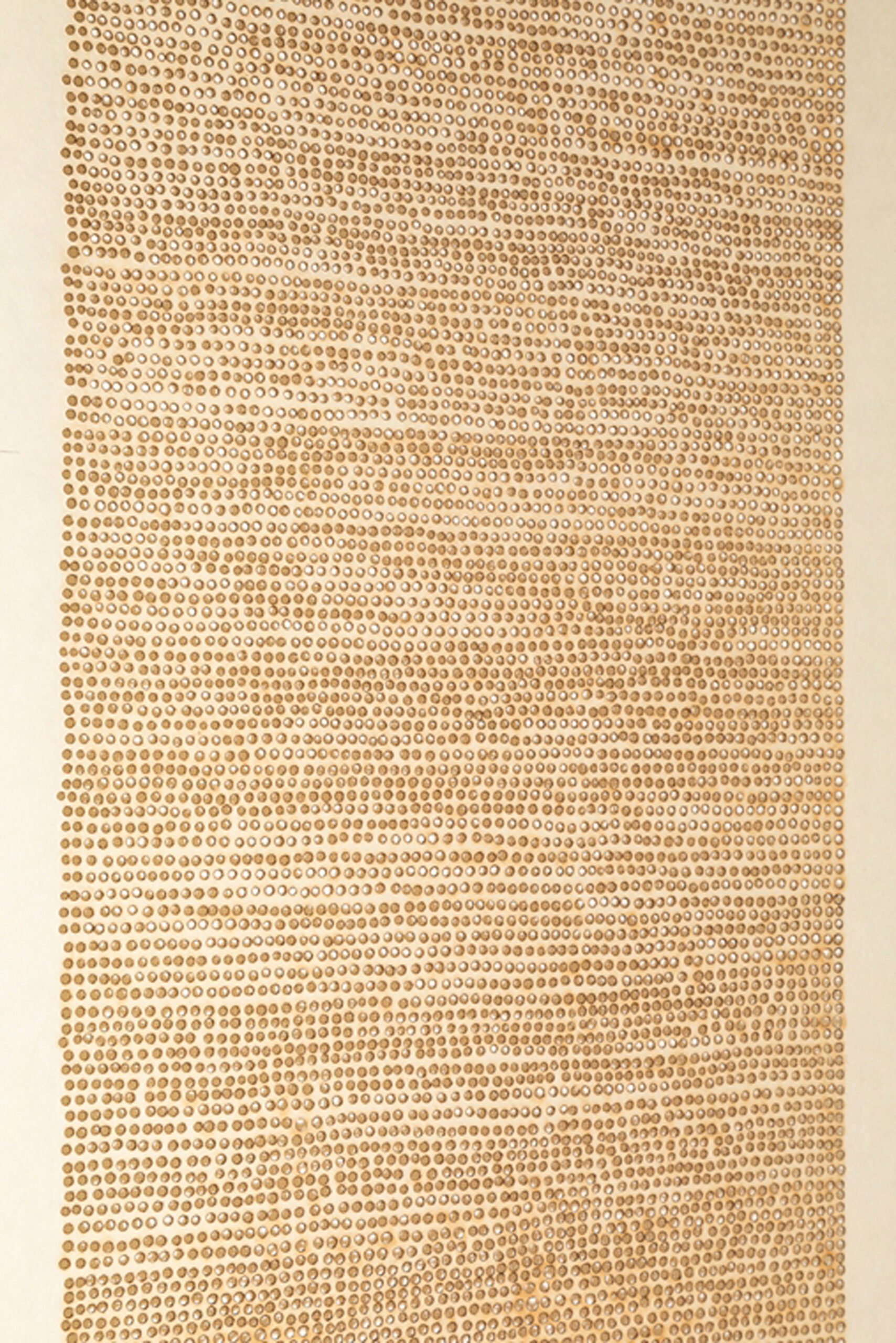
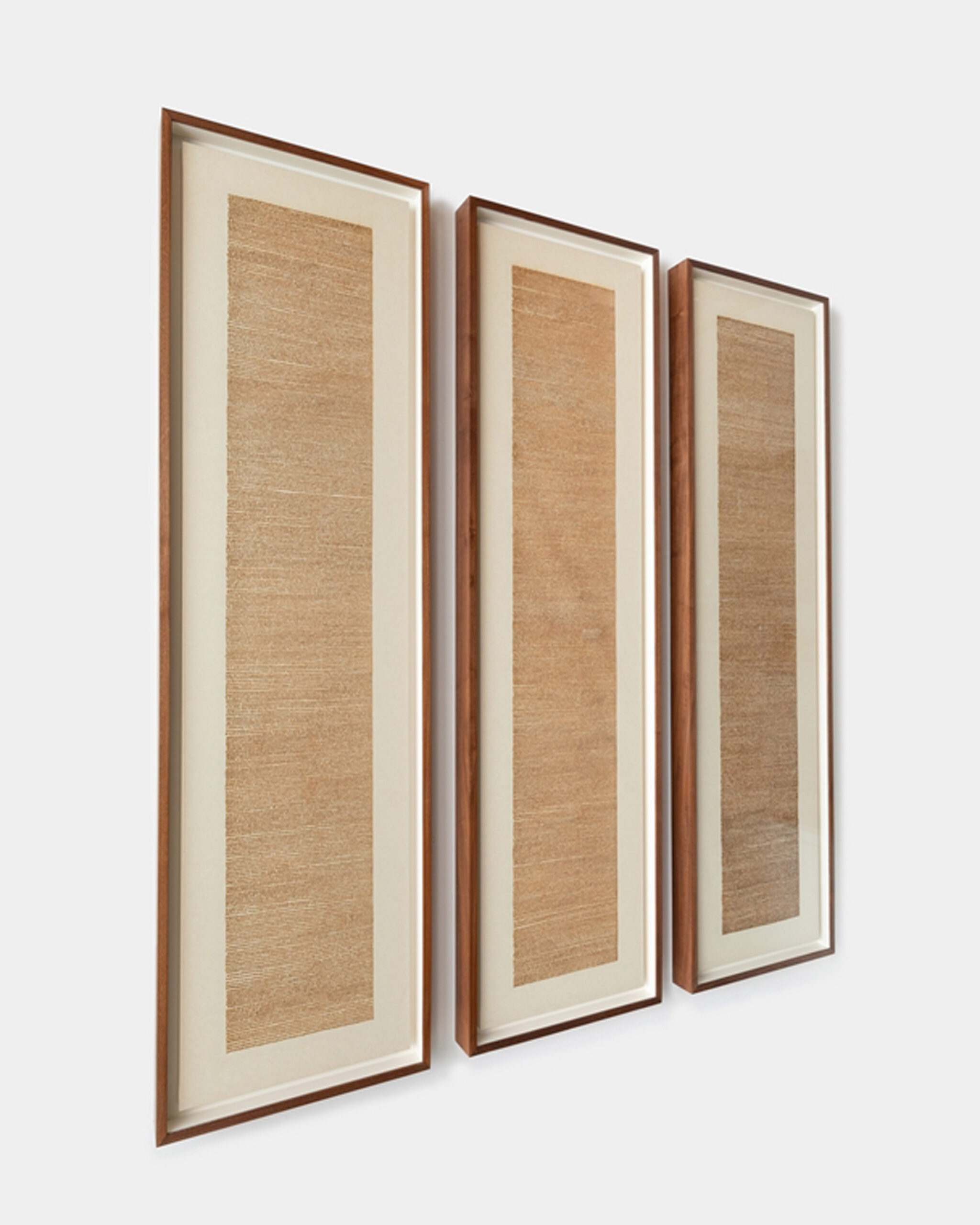
Emerging British talent Emilie Pugh explores the interconnectivity of all living things. Combining conceptual ideation with revised craft techniques, she utilises age-old materials and tools in order to investigate the systems of belief that inform both science and spirituality. With her Chronos (86400 seconds) piece, the artist used a piercing device to burn a hole into one of three large sheets of Kozuke paper every second, over the course of 24 hours. The finished piece serves as a demarcation of the process and plays on our often skewed perception of this innate force. The triptyque is on view with Michael Goedhuis gallery.
Rococo chairs with masterful curvaceous forms (Galerie Léage)

Marking a shift in style from the Louis XIV to Louis XV periods of French decorative art, these armchairs reflect the evolution of joinery over time and the ability of master artisans to create rounder forms. Attributed to Louis Delanois—a Parisian menuisier (skilled carpenter) who specialised in seating—this work reveals that upholstery became less intrinsic to such furniture typologies. The fabric elements of this emphatically Rococo design could also be interchanged. This particular piece—with comparable examples created in 1755 and part of the Metropolitan Museum of Art’s collection—is being showcased by Galerie Léage.
A tongue-in-cheek bookbinding for taking care of “business” (Thomas Heneage Art Books)
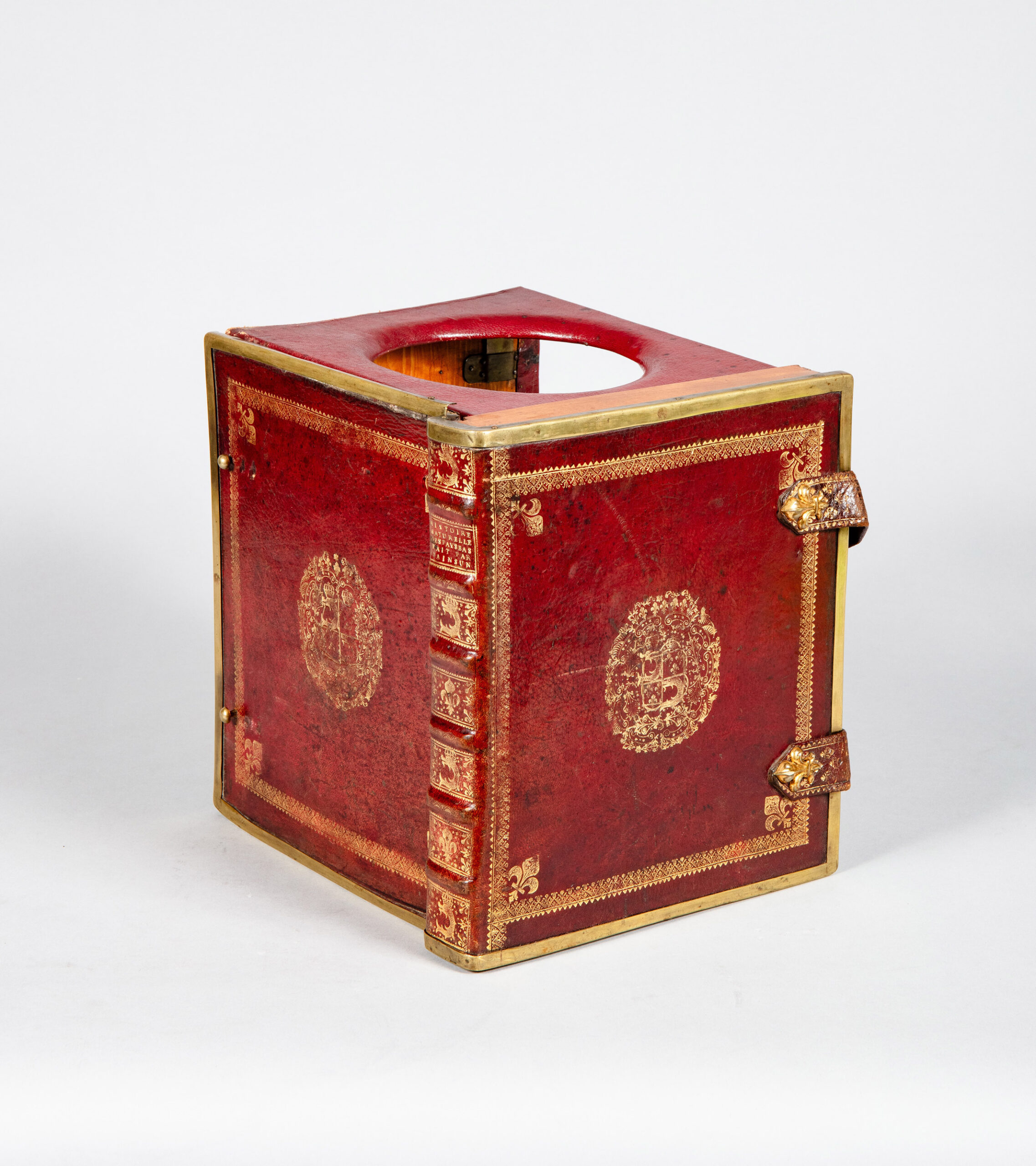
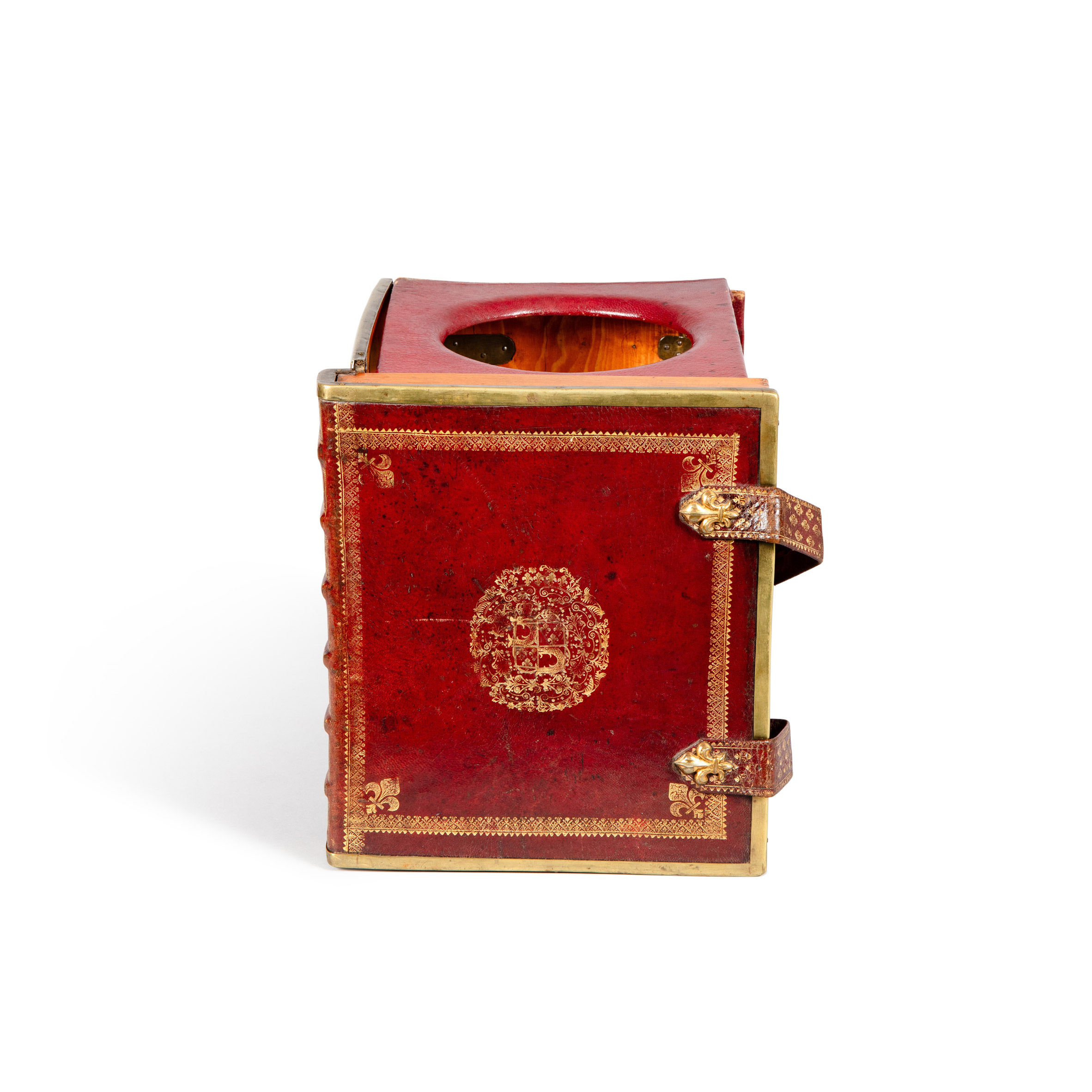
Not all Ancien Regime furnishings were functional; sometimes they were humoristic and suggestive. It’s no secret that, with lack of plumbing, the especially crowded Palace of Versailles was a malodorous place—so much so that perfume was invented to help mitigate the problem. Instead, most inhabitants relied on chamber pots transported by servants, and to conceal the receptacle used by King Louis XIV’s children, an artisan called Painsun developed a faux bookbinding. Inscribed with the title “Histoire Naturel des Pays Bas” (The history of the nether regions), the tongue-in-cheek nature of the item is clear, and it is garnering a lot of attention while on view with Thomas Heneage Art Books.
Proof of Alexander Calder’s late foray into tapestry (Galerie Boccara)

American artist Alexander Calder is perhaps best known for his kinetic mobiles and his static “stabiles” public sculptors—monumental works often incorporate amoebic forms rendered in blacks and primary tones. His ultimate aim was to transcribe movement in static and semi-static form, and this objective also informed a lesser-known foray into tapestry in later life. One of Calder’s creations from this period, the handwoven Les Vers Noirs wall hanging he developed with French artisanal producer Editions Pinton Felletin, is on view with Galerie Boccara.
A handsome Chippendale desk offering a prime example of Americana (Levy Galleries)

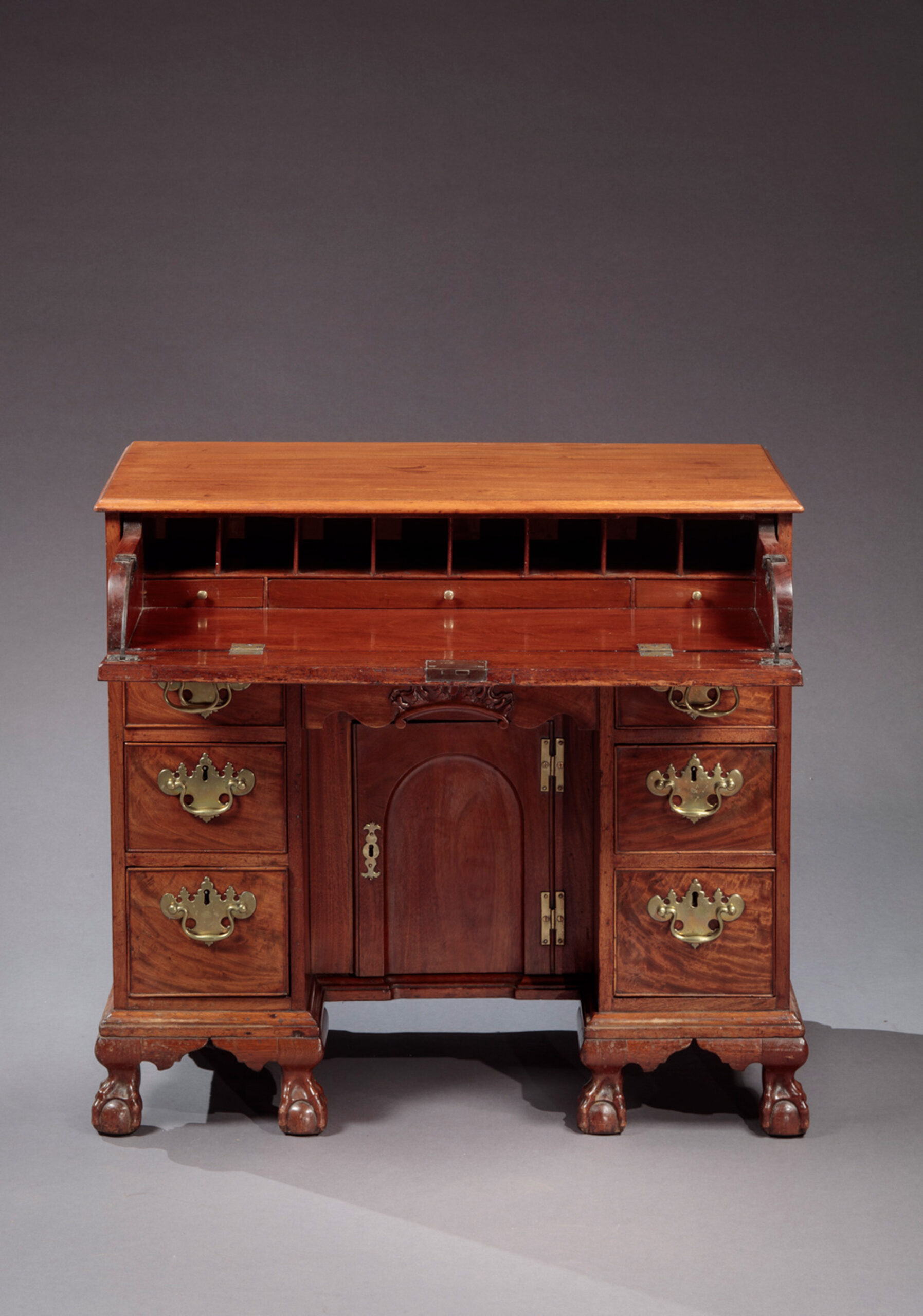
A sizable portion of this year’s The Winter Show centres on American decorative arts. As part of a specially curated collaborative showcase entitled Focus: Americana, furnishings, artworks, and other objects demonstrate the country’s long-standing but often overlooked contribution to this field, especially in its unique translation of international styles. Among the eclectic offering is the Chippendale Kneehole Desk With Ball and Claw Feet and a Carved Drawer (circa 1760) on loan from Levy Galleries. Once owned by the Gardiner family of Long Island, the stately escritoire is reflective of the movement’s ability to blend elements of the Gothic and Rococo periods. With its ornate handles, this piece nods to the American Federal style as well.
Drawings from the first European explorations of North America (Daniel Crouch Rare Books)

Amongst a presentation of rare maps and miniature globes depicting different political and geographic delineations, Daniel Crouch Rare Books is showcasing prints and drawings made by numerous explorer-artists discovering the North American west for the first time. Coke Smyth’s depiction of Canada’s unadulterated nature inhabited by First Nations peoples is a strong example of this impetus. Though the topic of manifest destiny and the colonisation of this region is complex, and such imagery might have been used to sell these ideas, the artworks also serve as an accurate, if slightly romanticised, record of what European settlers found during their expeditions.
A rare, experimental blown-glass mosaic vase (Glass Past)

Itinerant platform Glass Past is widely respected as the preeminent purveyor of rare Italian glass in New York. Working closely with most of the major auction houses, this small but mighty practice offers its sourcing and identifying expertise to different stakeholders. The Blue Glass vase by Nicolò Barovier, a member of the centuries-old Venetian glass-blowing dynasty is a rare demonstration of the mosaic technique. The blown tube-slicing and piecing-together process, one he invented, is as time consuming as it is meticulous. The rare results of this first exploration demonstrate what such a mastery of skill can afford when engaging in experimentation.
Marbled Japanese porcelain resembling flowing water (Joan B Mirviss)
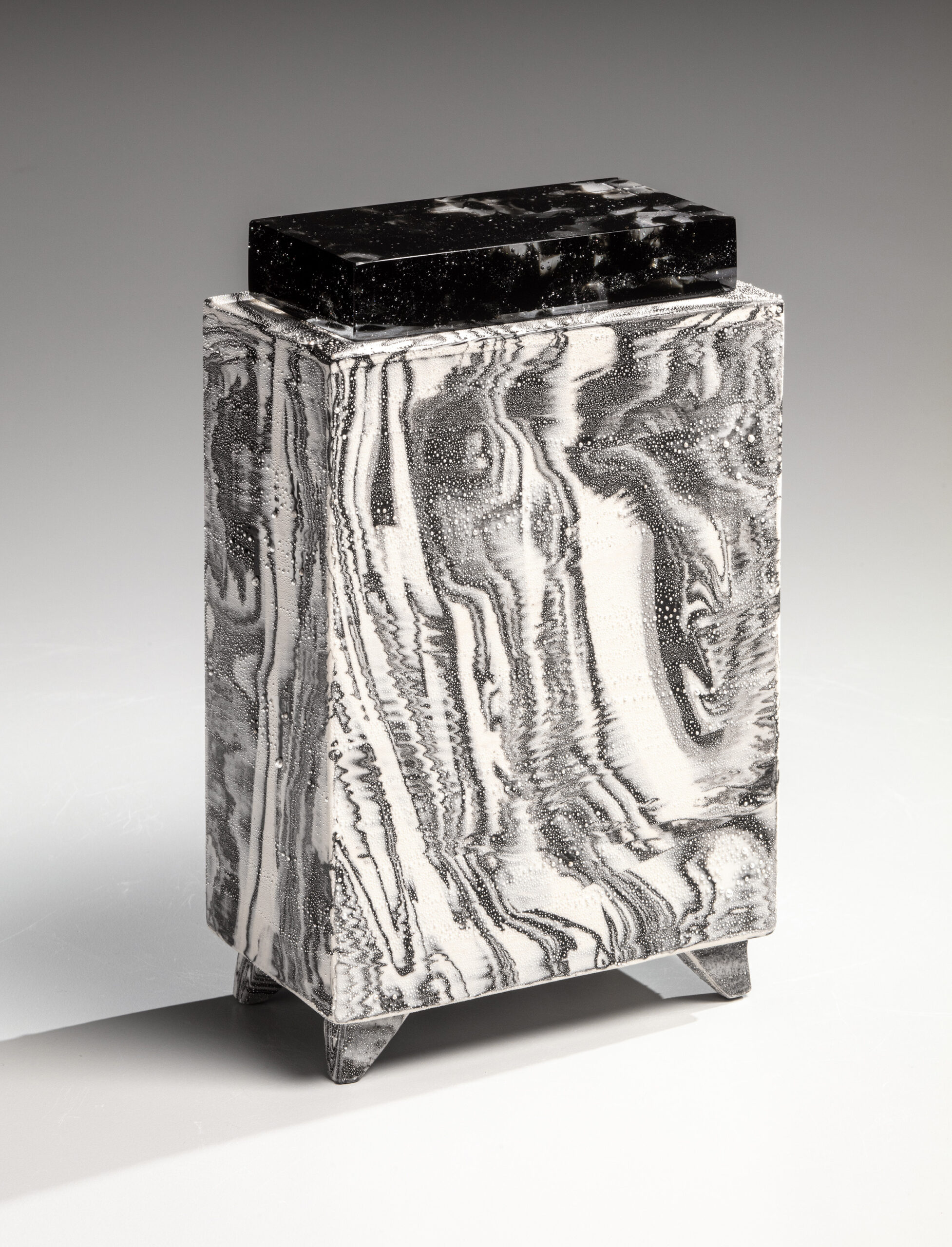
Building on the painterly sometsuke (cobalt blue on white porcelain) ceramic tradition mastered by his grandfather, Japanese potter Kondō Takahiro has shaped his respective career by mixing and matching different established and newly imagined techniques. By implementing silver mist (gintekisai) glaze—a combination of platinum, gold, silver, and glass frit—Takahiro is able to produce works like Nami Shizuku. The marbled porcelain vessel appears to have been coated in a layer of iridescent bubbles, and together, these two treatments evoke water flowing across its surface. The piece is on view with Joan B Mirviss gallery as part of a showcase highlighting the ever-evolving Japanese blue-white ceramic practice.
A carved wood sculpture informed by the erosion of riverbeds (Maison Gerard)
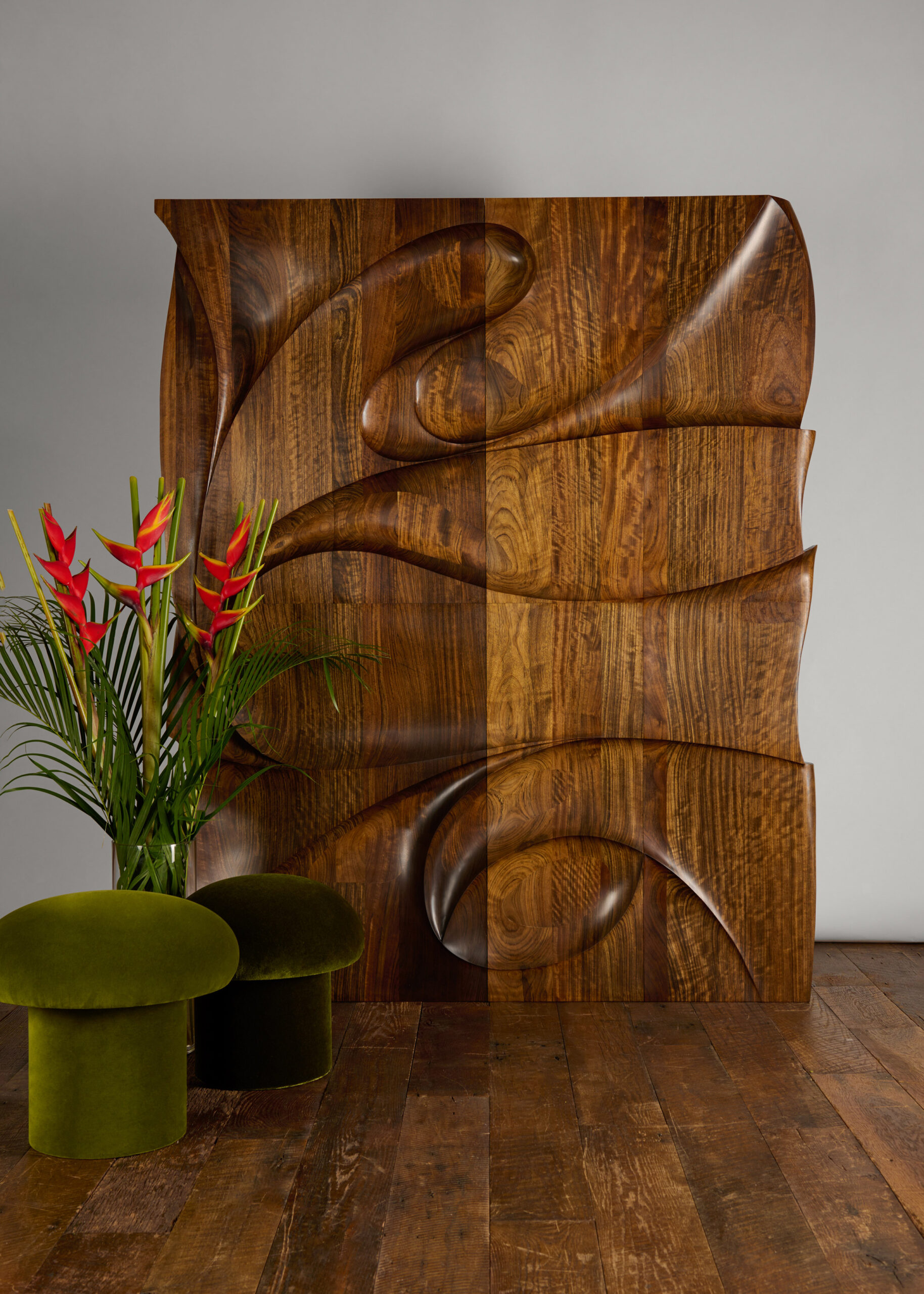
A savant when it comes to the sinuous sculpting of wood, Michael Coffey has been a fixture of American art and studio furniture movements since the late 1970s. Presented by Maison Gerard, his recently completed Galaxy II Monumental Carved Wall draws inspiration from the curvatures and composition of geolithic carving. The process of water shaping stone over millennia is something the sculptor has witnessed in the riverbeds that surround his southern Vermont studio, and now nods to through his craft.
Read more: Design Fairs | Design | Interior Designers I Interiors | Antiques | Vintage | New York | Park Avenue Armory | Winter Show



